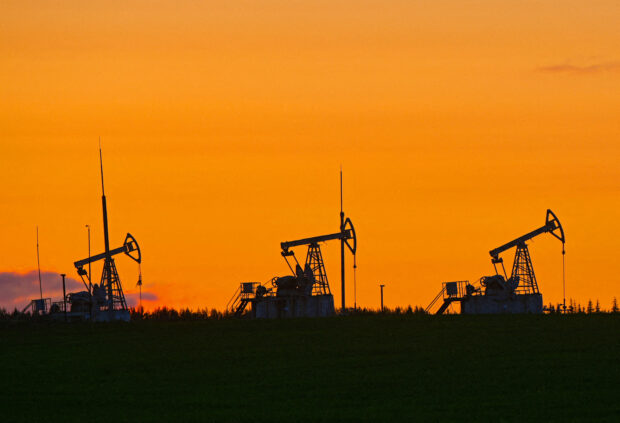OPEC+ panel meets against backdrop of a stronger oil market

A view shows oil pump jacks outside Almetyevsk in the Republic of Tatarstan, Russia June 4, 2023. REUTERS/Alexander Manzyuk/File photo
LONDON/DUBAI – An OPEC+ ministerial panel which meets on Friday is unlikely to tweak the group’s current oil output policy, five OPEC+ sources told Reuters, after a Saudi decision to extend its voluntary cut into September helped oil prices rally further.
The panel, called the Joint Ministerial Monitoring Committee, can call for a full meeting of the Organization of the Petroleum Exporting Countries (OPEC) and allies led by Russia, known as OPEC+, if warranted.
Oil prices rose more than 14 percent in July compared with June, the biggest monthly percentage increase since January last year, as tighter supply and rising demand outweighed concern that interest rate hikes and stubborn inflation could hit economic growth.
One of the sources said Friday’s meeting would be “very short”. Four other sources said they did not expect the meeting to yield any recommendations for changing output policy. All five sources spoke on condition of anonymity.
On Thursday, OPEC leader Saudi Arabia said it will extend a voluntary oil output cut of one million barrels per day (bpd) for another month to include September, adding it could be extended beyond that or deepened. Oil prices on Friday traded at nearly $86 a barrel, close to their highest since mid-April.
Russia will also cut oil exports by 300,000 bpd in September, Deputy Prime Minister Alexander Novak said shortly after the Saudi announcement.
OPEC member Algeria, which announced an additional voluntary cut of 20,000 bpd for August, is yet to decide whether to extend the cut into September, a source with knowledge of the matter told Reuters.
OPEC+ agreed on a broad deal to limit supply into 2024 at its last policy meeting in June, and Saudi Arabia pledged a voluntary production cut for July that it extended to include August.
The group’s output cuts, excluding the additional voluntary reductions from the three producers, amount to 3.66 million bpd, roughly 3.6 percent of global demand.